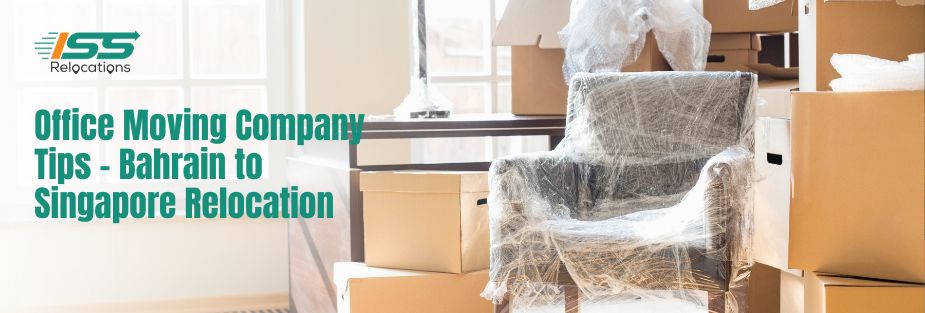
Tips for disassembling and storing furniture: Storing large items
Relocating to a new home is always an exciting time, but it can also be stressful, particularly when it comes to storing large items such as furniture. Whether you’re downsizing, moving to a new city, or just need some extra space, storing large items like furniture can be a daunting task. However, with the right tips and techniques, it can be done efficiently and without damage to your furniture. In this blog post, we will provide some tips on disassembling and storing furniture during a move.
Assess the size and weight of the furniture
Before you start disassembling and storing furniture, it’s important to assess the size and weight of the furniture. This will help you determine how much space you need and which tools you will need to disassemble the furniture. You should also take note of any fragile parts, such as glass doors or mirrors, and ensure they are properly protected during storage.
When it comes to disassembling furniture, you will need a variety of tools, including a screwdriver, pliers, hammer, and Allen wrench. It’s a good idea to have a toolbox with all the necessary tools handy to make the process more efficient.
Disassembling furniture
Disassembling furniture is a crucial step in storing it. While the process may seem intimidating, it’s important to approach it carefully to avoid causing any damage to the furniture. Below are some tips for disassembling different types of furniture:
Beds: Start by removing the mattress and bedding. Then, unscrew the headboard and footboard from the frame. If the frame has slats, remove them as well. Label all parts to avoid confusion during reassembly.
Dressers: Empty all drawers before disassembling the dresser. Then, remove the drawers and unscrew the hardware from the frame. Disassemble the mirror if it’s attached and wrap it carefully to prevent any damage.
Cabinets: Empty the cabinets before disassembling them. Then, remove the shelves and unscrew any hardware from the frame. If the cabinet has glass doors, remove them and wrap them separately.
It’s important to wear gloves and safety goggles when disassembling furniture to avoid any accidents.
Preparing furniture for storage
Preparing furniture for storage is a crucial step in ensuring that it remains in good condition during the relocation process. It’s essential to clean, wrap and pack your furniture properly to protect it from dust, moisture, and other environmental factors that can cause damage. Here are some tips for preparing your furniture for storage:
Cleaning the furniture before storage: Before you start storing furniture, make sure to clean it thoroughly. Use a soft cloth to remove any dust and dirt, and consider using a wood polish or leather conditioner to protect and nourish the furniture. If you’re storing furniture which is upholstered, use a vacuum cleaner to remove any dirt or debris from the fabric.
Wrapping and packing the furniture for protection: To protect your furniture during storage, it’s essential to wrap and pack it properly. Use furniture blankets or bubble wrap to protect the furniture from scratches, dents, and other damage during transit. Secure the blankets or bubble wrap in place with packing tape.
Importance of labelling the furniture for easy identification: To make it easier to locate your furniture in storage, it’s important to label it properly. Use a permanent marker to label each item with a description of its contents, and consider adding an inventory number or other identifying information. This will make it easier to find your furniture when you need it and avoid confusion.
When packing furniture for storage, it’s important to be mindful of its shape and size. Here are some tips for packing different types of furniture:
Beds: Disassemble the bed frame and store each piece separately. Wrap the mattress and box spring in plastic to protect them from dust and moisture.
Dressers: Empty the drawers and remove any shelves or other removable parts. Wrap the drawers in plastic or bubble wrap, and stack them neatly in the storage unit.
Cabinets: Remove any shelves or removable parts, and wrap them in bubble wrap or furniture blankets. Store the cabinet and the shelves separately in the storage unit.
It’s also important to consider the type of storage unit you choose for your furniture. Here are some factors to consider:
Size: Choose a storage unit that’s the right size for your furniture. This will prevent damage caused by overcrowding or cramming items into a space that’s too small.
Security: Look for a storage unit that’s secure, with features such as a gated entrance, surveillance cameras, and individual locks on each unit.
Climate control: If you’re storing delicate or sensitive items such as antique furniture or electronics, consider a storage unit with climate control to prevent damage from humidity and temperature fluctuations.
In summary, preparing your furniture for storage is an important step in ensuring its safety and protection during the relocation process. Clean the furniture thoroughly, wrap and pack it carefully, and label it for easy identification. Choose the right storage unit that’s the right size, secure, and climate-controlled, and take the necessary precautions to prevent damage to your furniture. By following these tips, you can ensure that your furniture arrives at its destination in the same condition as when it was packed.
Loading and unloading furniture
Loading and unloading furniture is a crucial part of the relocation process, and it’s essential to do it safely to avoid injury or damage to the furniture. Here are some tips for loading and unloading furniture:
Safe techniques for loading and unloading furniture onto a moving truck To avoid injury or damage to the furniture, it’s important to use safe techniques for loading and unloading it onto a moving truck. Here are some tips:
Use a ramp or liftgate to load and unload heavy items such as refrigerators or sofas.
Use dollies or hand trucks to move heavy items, and make sure they are properly secured.
Use straps or ropes to secure the furniture to the truck and prevent it from shifting during transit.
Safety tips for handling heavy furniture: Handling heavy furniture requires caution and proper technique to avoid injury. Here are some safety tips:
Lift with your legs, not your back, and keep your back straight.
Avoid twisting your body while lifting or carrying furniture.
Take breaks as needed to avoid fatigue and maintain your strength.
When unloading the furniture, take care not to drop or drag it on the ground, as this can cause damage to the furniture and the flooring.
It’s also important to consider the placement of the furniture on the moving truck. Here are some tips:
Place heavy items on the bottom and lighter items on top to prevent damage.
Secure the furniture to the truck with straps or ropes to prevent it from shifting during transit.
Use padding or blankets to protect the furniture during transport.
Once the furniture is loaded onto the truck, it’s important to secure it properly to prevent damage during transit. Here are some tips:
Use padding or blankets to protect the furniture during transport.
Secure the furniture to the truck with straps or ropes to prevent it from shifting during transit.
Place heavier items towards the front of the truck to help with balance and stability.
When unloading the furniture, take care not to drop or drag it on the ground, as this can cause damage to the furniture and the flooring.
In summary, loading and unloading furniture requires proper technique, caution, and attention to detail to ensure the safety of both the furniture and the people handling it. Use safe techniques for loading and unloading heavy items, take breaks as needed to avoid fatigue, and secure the furniture properly to prevent damage during transit. By following these tips, you can ensure a safe and successful relocation process for your furniture.
Maintaining the furniture in storage
Once your furniture is safely stored in a storage unit, it’s important to maintain it properly to prevent damage or deterioration. Here are some tips for maintaining your furniture in storage:
To prevent damage to your furniture while in storage, it’s important to take the following steps:
Keep the storage unit clean and dry to prevent moisture damage or mold growth.
Avoid stacking items on top of furniture to prevent crushing or other damage.
Use protective covers or padding to protect the furniture from dust and dirt.
Avoid placing the furniture near windows or doors where it may be exposed to sunlight or moisture.
It’s a good idea to periodically check on your furniture while it’s in storage to make sure it’s still in good condition. Here are some tips for checking on your furniture:
Check for any signs of damage or deterioration, such as cracks, warping, or insect infestations.
Make sure the furniture is still properly secured to prevent it from shifting or falling.
Check the protective covers or padding to make sure they’re still in place and in good condition.
Pests such as rodents or insects can cause damage to your furniture while it’s in storage. Here are some tips for preventing pest infestations:
Seal any cracks or gaps in the storage unit to prevent pests from entering.
Use pest control products such as traps or baits to prevent infestations.
Avoid storing food or other items that may attract pests.
In addition to these tips, it’s also important to choose a storage unit that is clean, secure, and climate-controlled. A climate-controlled storage unit can help prevent moisture damage or temperature fluctuations that may cause damage to your furniture.
By following these tips for maintaining your furniture in storage, you can ensure that your furniture stays in good condition and is ready to use when you need it.
Conclusion
Storing large items like furniture can be challenging, but with the right tips and techniques, it can be done safely and efficiently. Make sure to assess the size and weight of the furniture, disassemble it carefully, and prepare it properly for storage. Choose a storage unit that’s the right size, secure, and climate-controlled. Take the necessary precautions when loading and unloading furniture to avoid injury. Finally, maintain your furniture in storage to prevent damage. By following these tips, you can ensure that your furniture is safe and protected during the relocation process. And if you want to ensure a hassle-free relocation, consider hiring a reliable relocation company like ISS Relocations.
Plan Stress-free Move with Top Moving Company in UAE - ISS Relocations

Frequently Asked Questions
How do you store furniture for moving to UAE?
When moving to UAE, storing furniture requires proper disassembly, protective wrapping, and climate-controlled storage to prevent damage. ISS Relocations offers secure storage solutions and expert packing services to keep your furniture safe and in top condition during your move.
What is storage furniture for UAE?
Storage furniture in UAE refers to space-saving solutions like modular shelving, foldable furniture, and compact designs that maximize living space. ISS Relocations provides professional storing furniture solutions, ensuring your items are efficiently packed and securely stored.
How do you keep furniture in place?
To keep furniture in place during storage or transit, use straps, padding, and secure stacking techniques. ISS Relocations offers expert furniture storage and transportation services, ensuring your valuables remain intact and protected throughout the moving process.
How do you keep furniture in good condition while moving to UAE?
To maintain furniture quality, use bubble wrap, moisture-resistant covers, and climate-controlled storage. ISS Relocations specializes in storing furniture with professional-grade packing and secure storage facilities to protect your belongings.
What are the benefits of space-saving furniture?
Space-saving furniture enhances functionality, reduces clutter, and optimizes living areas, making it ideal for UAE’s modern homes. ISS Relocations offers smart storage solutions and professional moving services to help manage your furniture efficiently.
Where can I store my furniture in Dubai?
There are several secure storage facilities in Dubai, but finding a trusted provider is crucial. ISS Relocations offers safe, climate-controlled storage solutions tailored to your needs, whether for short-term or long-term furniture storage.
How do you put your furniture in storage in Dubai?
To store furniture in Dubai, disassemble large items, wrap them securely, and choose a reputable storage provider. ISS Relocations provides expert packing, transportation, and secure storage facilities, ensuring your furniture remains in excellent condition.
Moving Company - Recent Blog
Stay informed and prepared for your next move with our latest blogs on moving services in the UAE. From expert packing tips to international relocation guides, ISS Relocations brings you up-to-date insights to make your moving experience smoother, safer, and stress-free.










